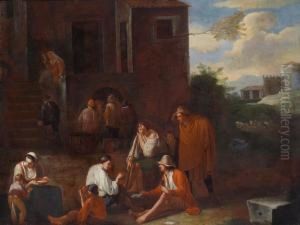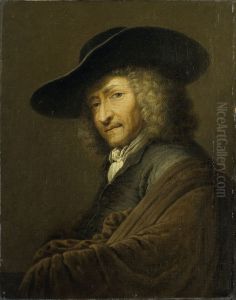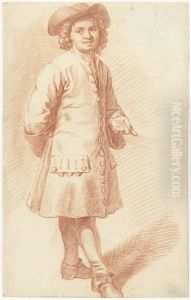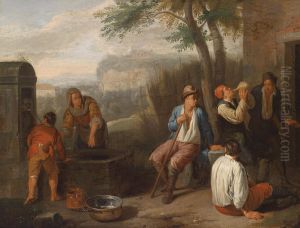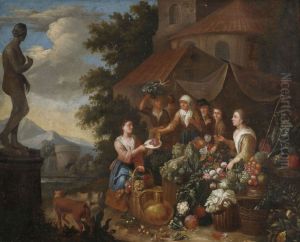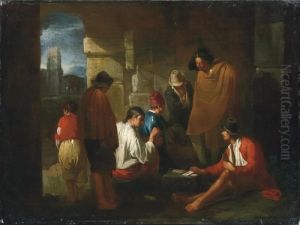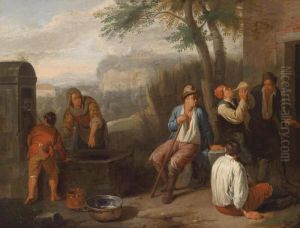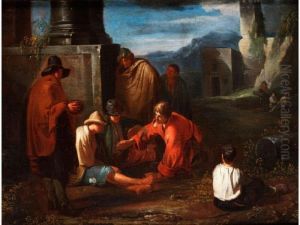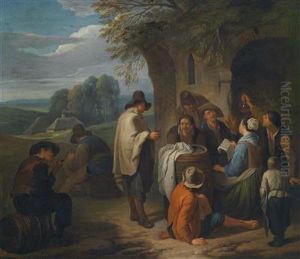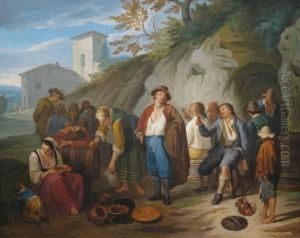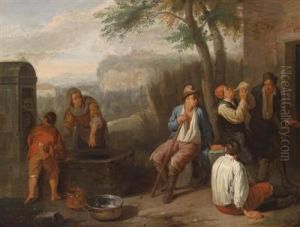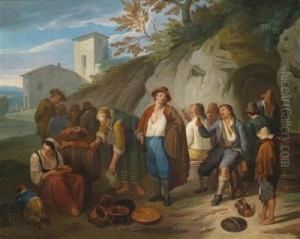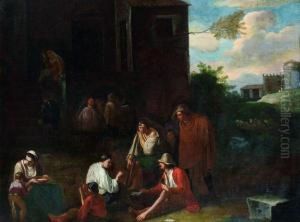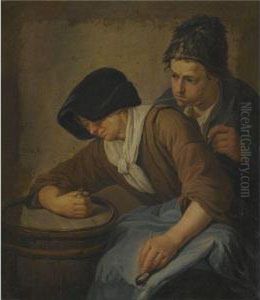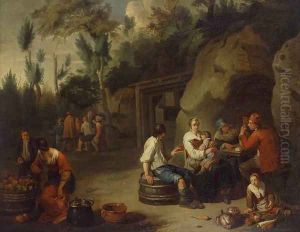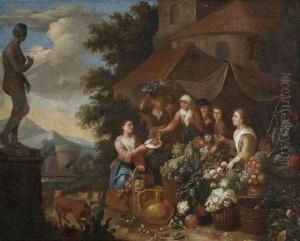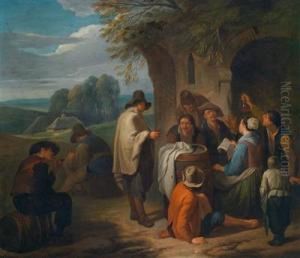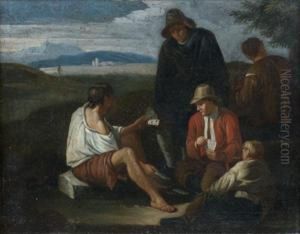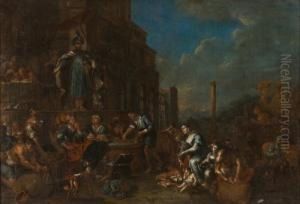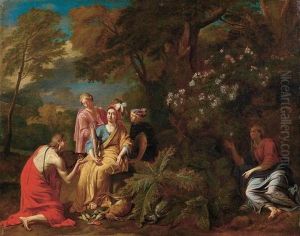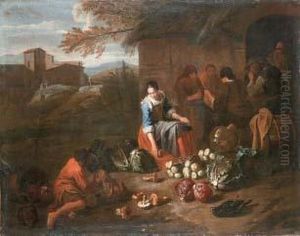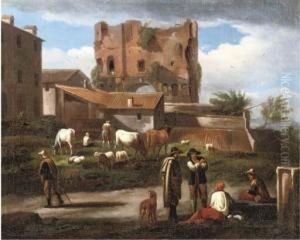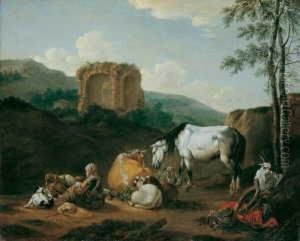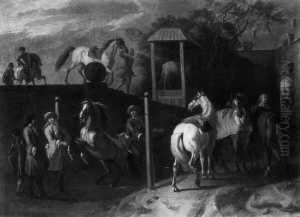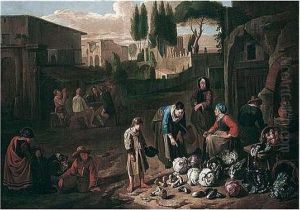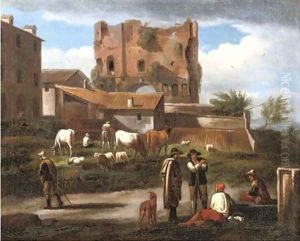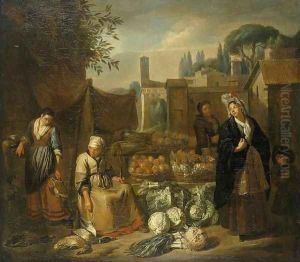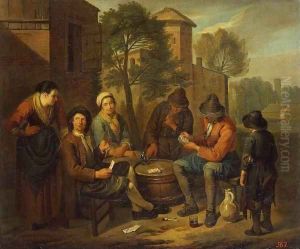Norbert van Bloemen Paintings
Norbert van Bloemen, also known as Norberto or Cefalus, was a Flemish painter born in Antwerp in 1670. He came from a family of artists; his brothers Jan Frans and Pieter were also painters. Norbert's style was heavily influenced by his time in Italy, where he is believed to have moved around 1685, and where he stayed for a considerable period.
His work mostly revolved around genre scenes, often with a comedic or satirical twist, and he was known for his skill in depicting everyday life with a certain light-heartedness. His Italian influences are evident in his use of color and his choice of subjects, which often include figures in contemporary Italian dress and scenes from Italian comedy.
Norbert van Bloemen was particularly adept at capturing the nuances of body language and facial expressions, which he often used to great effect to convey the mood and story of his scenes. Despite the light-hearted nature of his work, his paintings also display a high level of craftsmanship and attention to detail.
After his Italian sojourn, Norbert returned to northern Europe, where he continued to work and develop his style. His paintings during this period maintained the Italian influence but also adapted to the tastes and styles of the Flemish and Dutch art markets.
His work was well received during his lifetime, and he had a significant impact on genre painting in the 18th century. However, Norbert van Bloemen's work fell into relative obscurity after his death in 1746, and he is not as well known today as some of his contemporaries. Nonetheless, his paintings remain appreciated by art historians and collectors for their charm, technical skill, and historical value in representing the cross-cultural influences between the Italian and Flemish artistic traditions.
